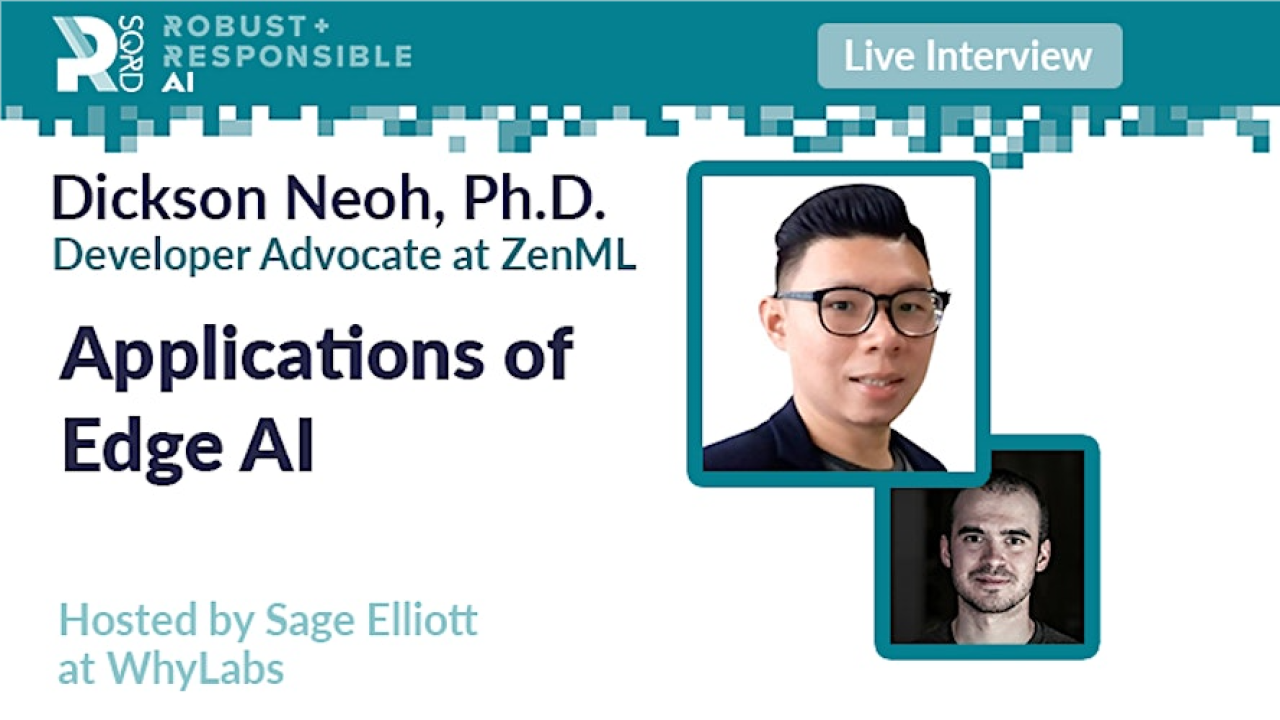Applications of Edge AI with Sage Elliot at Whylabs




Table of Contents
Table of Contents
✨ Introduction
Running AI on the Edge has become a widely discussed topic in the world of artificial intelligence. At its core, the concept of Edge AI involves putting AI algorithms as close to the user or data as possible. This is in contrast to the traditional server-based approach, where computations are carried out in remote servers, leading to slow response times and the need to transfer data back and forth.
In this talk, we will delve into what it means to run AI on the Edge, the benefits of this approach and how it differs from the traditional server-based one. We will also look at the various reasons why industries are adopting Edge AI, including latency, robustness, cost reduction, privacy, and more. By the end, you will have a better understanding of Edge AI and its significance in the world of technology.
Here’s my conversation Sage Elliot from Whylabs.
🤖 What is Edge AI?
Edge AI is the implementation of Artificial Intelligence (AI) models directly on the device where data is generated, rather than relying on a remote server.
This approach brings the AI models closer to the data source, making the process faster and reducing the latency. Edge AI has become increasingly popular due to its ability to reduce the amount of data being sent to remote servers, improve privacy, and save cost.
🏋️♀️ Why run AI on the Edge?
There are several reasons why one might want to run AI on the Edge. Here are some of the most significant reasons:
Latency: Edge AI can deliver real-time results, making it ideal for applications that require immediate responses such as self-driving cars.
Robustness: By having the AI models on the device, Edge AI can provide results even in the absence of an internet connection, which makes it more robust and reliable.
Cost reduction: Sending large data to remote servers for processing can be expensive, especially in industries with limited access to Wi-Fi or landline. Edge AI eliminates this cost by processing the data directly on the device.
Privacy: Keeping data within the device protects sensitive information from being transferred to remote servers, thus improving privacy.
💫 Use Cases of Edge AI
Edge AI has found applications in several industries, including:
Computer Vision: Edge AI can be used to implement face recognition or image classification on devices like smartphones. Read some of my recent projects on running object detection models real-time on a CPU using OpenVINO and DeepSparse.
Agriculture: Edge AI can be used in agriculture to monitor crops and provide real-time predictions on their growth.
Healthcare: Edge AI can be used in medical devices to process data and provide results without relying on remote servers.
Automotive: Self-driving cars require real-time predictions to make critical decisions. Edge AI provides a solution to this by processing data directly on the device.
In conclusion, Edge AI is a powerful technology that has revolutionized how data is processed and analyzed. It provides faster, more reliable, and more secure results than traditional server-based AI solutions.

